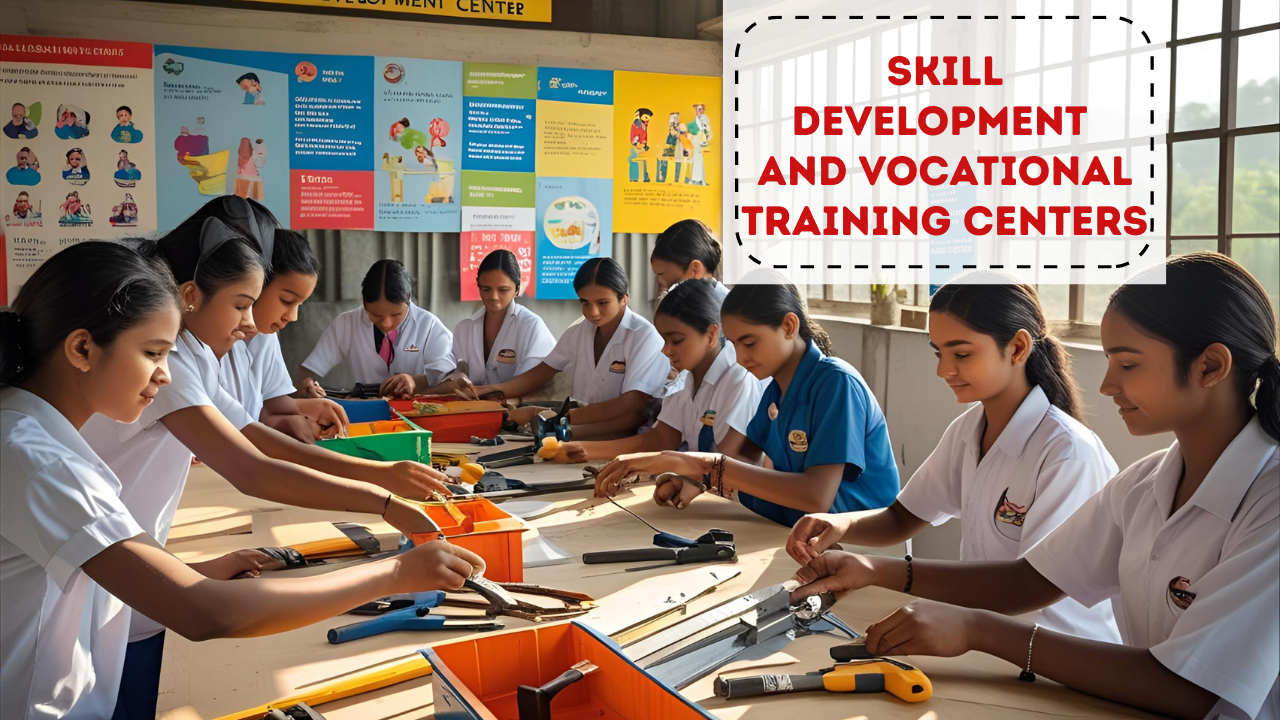In today’s competitive and fast-changing job market, having the right skills can make all the difference. While academic degrees remain valuable, hands-on training and practical skills are increasingly becoming the key to employment. That’s why free skill development and vocational training centers have emerged as a powerful resource—especially for youth, low-income groups, and job seekers who need a head start.
This article explores what these centers offer, who they benefit, and how you can enroll to build a brighter, more secure future.
Table of Contents
- What Are Skill Development and Vocational Training Centers?
- Why Free Training Programs Are Essential Today
- Courses Commonly Offered at These Centers
- Who Can Benefit from These Programs?
- Government and NGO Involvement
- How to Enroll and What to Expect
- Final Thoughts: Skill Up for Success
1. What Are Skill Development and Vocational Training Centers?
Skill development and vocational training centers are institutions that offer job-oriented training programs designed to equip individuals with the skills needed in specific trades or professions. These centers focus on practical, real-world knowledge rather than academic theory, making them ideal for those looking to enter the workforce quickly.
Many of these training centers are free of charge, especially those run by governments, nonprofits, or funded by CSR (Corporate Social Responsibility) initiatives.
2. Why Free Training Programs Are Essential Today
With rapid technological advancements and evolving job roles, there’s a growing gap between what traditional education teaches and what industries require. Free training centers help fill this gap by:
- Providing market-relevant skills
- Reducing unemployment, especially among youth and marginalized groups
- Empowering women and underrepresented communities to gain financial independence
- Encouraging entrepreneurship by teaching practical skills needed to start small businesses
In short, these centers act as a bridge between talent and opportunity.
3. Courses Commonly Offered at These Centers
Skill development and vocational centers usually offer a wide variety of short- to medium-term courses across different sectors. Some of the most in-demand programs include:
a. Information Technology
- Basic computer literacy
- Web development
- Data entry and digital marketing
- Graphic design and animation
b. Trade and Technical Skills
- Electrician training
- Plumbing
- Welding
- Auto repair
c. Health and Hospitality
- Nursing assistant training
- Housekeeping
- Culinary arts and food services
- Hotel management basics
d. Beauty and Wellness
- Hairdressing and cosmetology
- Spa therapy
- Skincare and makeup
e. Business and Communication
- Retail sales training
- Customer service
- Entrepreneurship development
- Soft skills and English speaking
These programs typically include both classroom instruction and hands-on experience, followed by assessment and certification.
4. Who Can Benefit from These Programs?
These free training centers are designed to be inclusive and accessible. Anyone can benefit, but they are particularly valuable for:
- Youth who are unemployed or not pursuing formal education
- School and college dropouts looking for career alternatives
- Women seeking economic independence
- Low-income individuals who cannot afford expensive professional courses
- Persons with disabilities, thanks to specially designed inclusive training modules
With minimal entry requirements and short durations, these programs make skill-building possible for anyone with the desire to learn.
5. Government and NGO Involvement
Many countries have national-level programs focused on upskilling their workforce. For example:
- In India, initiatives like Skill India Mission, PMKVY (Pradhan Mantri Kaushal Vikas Yojana), and DDU-GKY provide free training with job placement support.
- In the USA, programs like Job Corps, CareerOneStop, and state-level workforce training initiatives serve similar purposes.
- In Africa, several nonprofit and international agencies fund vocational training for youth and women in rural and urban areas.
NGOs and private organizations also contribute by offering niche training and mentorship, particularly in underserved communities.
6. How to Enroll and What to Expect
Enrolling in these programs is typically simple and requires minimal documentation. Here’s how you can get started:
Step 1: Find a Center
Search online or visit your local government office, employment exchange, or community center to locate nearby training institutes.
Step 2: Choose a Course
Pick a program based on your interest, aptitude, and career goals. Counselors at the center can also help guide your choice.
Step 3: Submit Application
Fill out an enrollment form. You may need to provide basic ID, proof of age, and education level.
Step 4: Attend Training
Most courses run between 1–6 months, with regular classes and practical sessions. Attendance is mandatory.
Step 5: Certification and Placement
After completion, you’ll receive a certificate that can help you apply for jobs. Many centers also have tie-ups with local companies and help with job placement.
7. Final Thoughts: Skill Up for Success
In an era where degrees alone no longer guarantee employment, skills are the new currency of success. Free vocational training centers make it possible for everyone—regardless of background or income level—to gain relevant, job-ready skills.
Whether you want to become a digital marketer, a welder, a nurse assistant, or a beautician, these centers provide the tools, training, and confidence to move forward. And with growing government support and awareness, opportunities are expanding faster than ever.
Don’t let lack of money or formal education hold you back. With free skill training, your future is in your hands.

